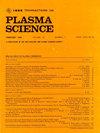Design of Quasi-Optical TE17,6 Mode Converter for High-Power 170-GHz Gyrotrons
IF 1.5
4区 物理与天体物理
Q3 PHYSICS, FLUIDS & PLASMAS
引用次数: 0
Abstract
A compact quasi-optical (QO) mode converter for a high-performance gyrotron operating in为高功率 170-GHz 陀螺仪设计准光学 TE17,6 模式转换器
本文研制了一种适用于170GHz工作在$\text {TE}_{17,6}$模式下的高性能回旋管的紧凑准光学(QO)模式转换器。该变换器的特点是采用了凹壁发射装置,采用了基于耦合模式理论的两级摄动方法,并辅以专门的反射镜系统。开发了MATLAB代码,对发射墙内的电磁场进行了分析。在自由空间中对发射器发射的辐射场进行了评估,镜面系统由准椭圆镜、椭圆镜和抛物面镜组成,以确保有效的相位校正。通过对半径、摄动幅度和摄动长度的优化,我们成功地在紧凑的95毫米设计范围内实现了高效的模式转换和光束整形。利用FEKO进行的综合模拟证实,这种缩短的发射装置保持了高模式纯度和低损耗。值得注意的是,其长度明显短于其他现有模型和典型的理论估计,突出了参数优化在开发紧凑型高性能发射器中的有效性。结果表明,发射装置总长度仅为95 mm,切割长度为17 mm,占发射装置总长度的17.8%。仿真结果表明,经过相位校正后,输出窗口的标量高斯模态含量和矢量高斯模态含量分别达到99.3%和98.4%。
本文章由计算机程序翻译,如有差异,请以英文原文为准。
求助全文
约1分钟内获得全文
求助全文
来源期刊

IEEE Transactions on Plasma Science
物理-物理:流体与等离子体
CiteScore
3.00
自引率
20.00%
发文量
538
审稿时长
3.8 months
期刊介绍:
The scope covers all aspects of the theory and application of plasma science. It includes the following areas: magnetohydrodynamics; thermionics and plasma diodes; basic plasma phenomena; gaseous electronics; microwave/plasma interaction; electron, ion, and plasma sources; space plasmas; intense electron and ion beams; laser-plasma interactions; plasma diagnostics; plasma chemistry and processing; solid-state plasmas; plasma heating; plasma for controlled fusion research; high energy density plasmas; industrial/commercial applications of plasma physics; plasma waves and instabilities; and high power microwave and submillimeter wave generation.
 求助内容:
求助内容: 应助结果提醒方式:
应助结果提醒方式:


